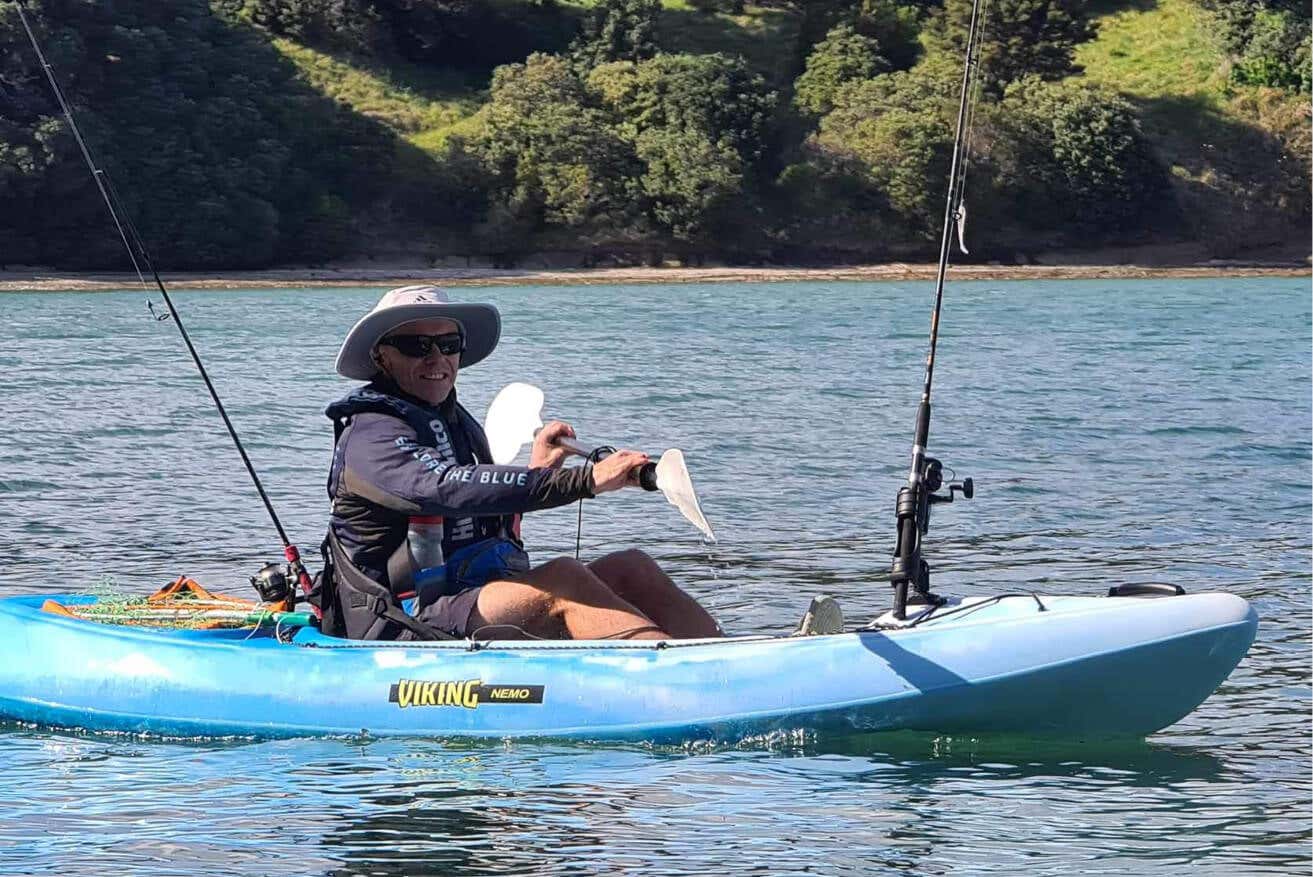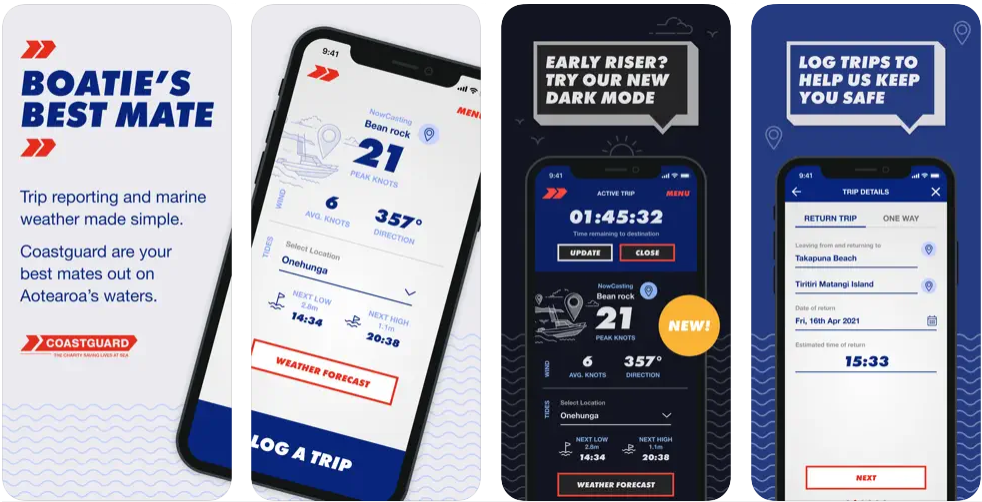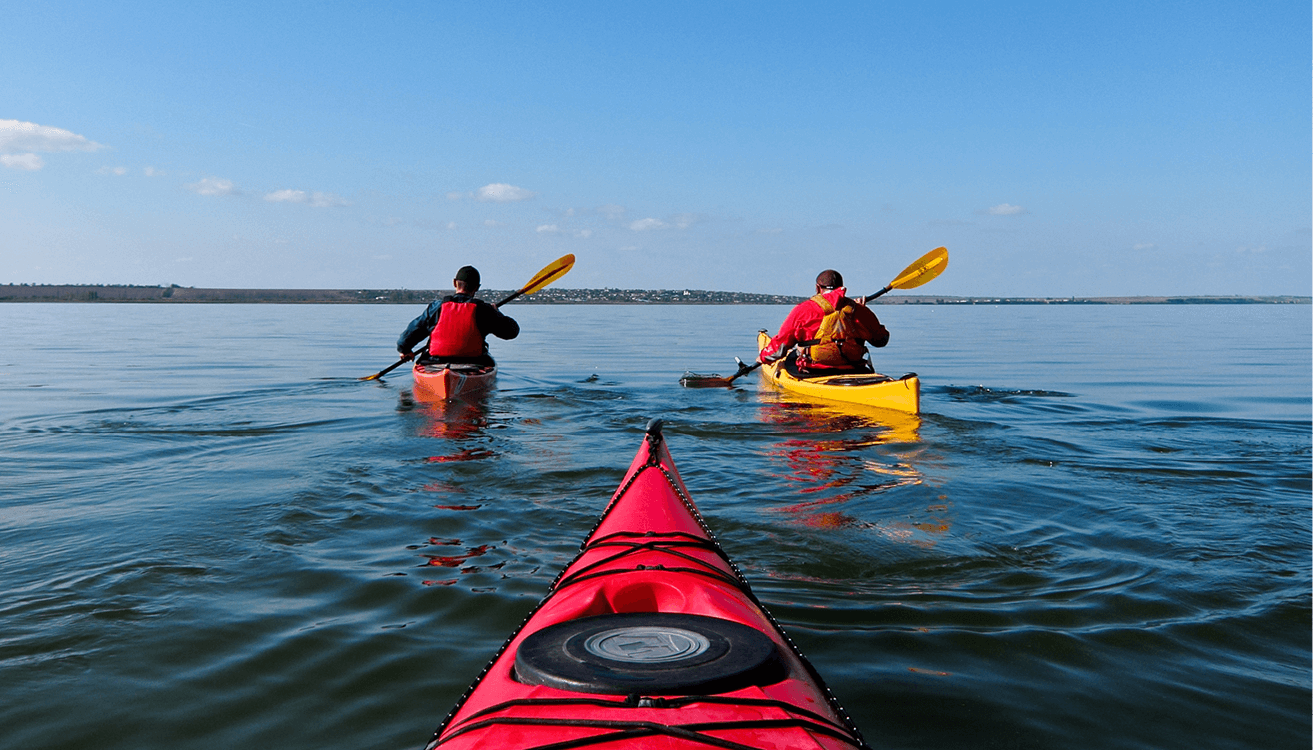KASK x Burnsco: Safety is Paramount
Kayaking offers the perfect blend of adventure, exercise, and nature. Often allowing you to connect in ways you can’t while on land while allowing you to explore New Zealand’s stunning waterways. As we have discussed previously, safety should always be number one on your list. In this article, we will go into a bit more depth in our essential kayak safety tips, including the WET acronym.
Before we dive into kayak safety, it's worth noting the efforts of KASK in promoting safe kayaking practices. As many of our customers are on the water every year, it was a no brainer for us to partner with KASK to help spread the kayak safety awareness message. This has brought about a series of resources and events aimed at educating kayakers of various skill levels throughout New Zealand. These include instructional videos, a New Zealand wide roadshow, and workshops designed to help enthusiasts learn, practice, and connect with fellow paddlers. To find when a workshop is in your area, please check out the following linkKayakSafe NZ
1. Before Heading on the Water - The WET Acronym
Before you launch your kayak, it's essential to remember the WET acronym, a handy checklist to ensure you're well prepared for your journey.
W - Weather: Always check the weather conditions before venturing out onto the water. Reliable resources like Windy, MetService, and Metvuw provide up to date information on wind speed and direction, as well as wave and swell height. Understanding the weather is crucial because it directly impacts the safety of your kayaking expedition.
Wind Speed and Direction: The wind's speed and direction play a significant role in determining whether it's safe to paddle. Paddling against strong winds can be challenging and potentially dangerous so be sure to stay within your skill and comfort level, especially when the wind is against you.
Wave and Swell Height: Assess the wave and swell height in your chosen area. Starting with smaller waves and swells is advisable, especially if you're a beginner. Gradually build your experience and confidence in more challenging conditions.
E - Equipment: Properly equipping yourself and your kayak is vital for safety on the water. Here's what you need to consider.
Personal Flotation Device (PFD): Always wear a PFD with a whistle attached. This flotation device can save your life in an emergency. It's your first line of defence against drowning.
Communication: Carry at least two forms of waterproof communication, such as a VHF radio and a mobile phone in a waterproof bag. These devices can help you call for assistance if needed.
Clothing: Dress appropriately for the conditions. Avoid wearing heavy and cold when wet clothing like jeans or hoodies. In the summer, protect yourself from the sun with a hat, sunglasses, and sunblock. In colder weather, wear neoprene and/or a dry top to keep warm even if you don’t end up in the water.
Helmet: If you're kayaking in surf or rough conditions, a helmet can provide extra protection in case of a capsize.
Rescue Equipment: Carry essential rescue equipment, including a water pump to remove excess water from your kayak and a towline for towing or rescue operations.


T - Tell Someone Your Plans: Never head out onto the water without informing someone ashore about your plans. Share specific details, such as your intended route, who you’re paddling with, and your expected return time. This information is crucial in case of an emergency and can aid rescuers in locating you quickly. You can also log this information on the Coastguard app before setting out.


2. How to Stay Safe on the Water
Once you're on the water, there are some practices that will increase not only your safety, but that of your kayaking mates.
Go out in a group: Paddling with a group is recommended. It provides a safety net, as you can keep an eye on each other and offer assistance if needed. Ideally, paddle close enough to comfortably communicate with one another. In cases where distance or noise makes verbal communication challenging, use whistles, hand signals, or paddle signals to convey messages effectively.
Communication: Continuously communicate with your group while on the water. Check on the well-being of your fellow paddlers, ensuring they aren't experiencing issues like seasickness, sunburn, or dehydration.
Be aware of boat lanes: Before you head out, familiarise yourself with any boat or shipping lanes in your area. When crossing these lanes, paddle in a tight knit group to minimise interference with passing boats.
Keep an eye on the weather: Stay vigilant and keep an eye on changing conditions, even if the forecast appears favourable, sudden storms or incoming rain can alter the situation, requiring you to adapt your plans accordingly.
Join a Local Club: If you're looking to increase your kayaking skills and safety knowledge, consider joining a local kayaking club or participating in skill centre workshops. These resources can provide invaluable training and connect you with experienced paddlers who can share their expertise.


3. What to Do in Case of an Emergency
Even with all the planning in the world, emergencies can sometimes happen. If you find yourself in a challenging situation, it's crucial to remain calm and follow a plan.
Stay calm: If you capsize or encounter an emergency, your first priority is to stay calm. Panic can hinder your ability to make rational decisions.
Hold onto your kayak and paddle: Ensure you retain control of your kayak and paddle. These are your lifelines in a crisis.
Self rescue: If possible, attempt to get back onto your kayak or call for assistance from a fellow paddler. Familiarise yourself with charts and communication procedures, such as those available on maritimenz.govt.nz, to effectively call for help using your VHF radio.
Practice makes perfect: Practice these emergency procedures in shallow, calm waters so that you're prepared to execute them to perfection if the need arises. Skills workshops like the KASK roadshow, clubs, and online events can help you hone these essential skills.
Kayaking is a fantastic way to connect with nature while exploring the many waterways New Zealand has to offer. However, ensuring your safety should always be the top priority. By following the WET acronym, equipping yourself adequately, practicing safe habits on the water, and being prepared for emergencies, you can enjoy all the benefits of kayaking while minimising any risks. Additionally, consider the resources and events offered by the KASK x Burnsco partnership to further increase your kayaking knowledge and skills, ensuring that every adventure is a safe and enjoyable one.
For other Kayak safety tips and articles please follow the links below:
KASK x Burnsco: Kayak Safety Intro
KASK x Burnsco: Kayak Equipment 101
Do you have any questions?
Please, contact our friendly team on 0800 102041 or email: website@burnsco.co.nz
We provide general information on products, not personal advice. Always seek the help of a relevant tradesperson if you have a technical query.

